Social media agencies face a critical operational challenge. Handling multiple clients’ social calendars demands precision, efficiency, and systematic workflows that prevent content mix-ups whilst maintaining consistent quality across every account.
This challenge grows exponentially with each new client. Three accounts require organised systems. Ten accounts demand automation. Twenty accounts necessitate enterprise-level infrastructure.
The stakes are high. One misplaced post to the wrong client account can damage relationships. Missed deadlines erode trust. Inconsistent quality threatens retention.
Yet agencies managing multiple social calendars effectively unlock significant advantages. Agencies using modern digital strategies grow approximately 70% faster than those relying on manual processes. The difference lies in operational excellence.
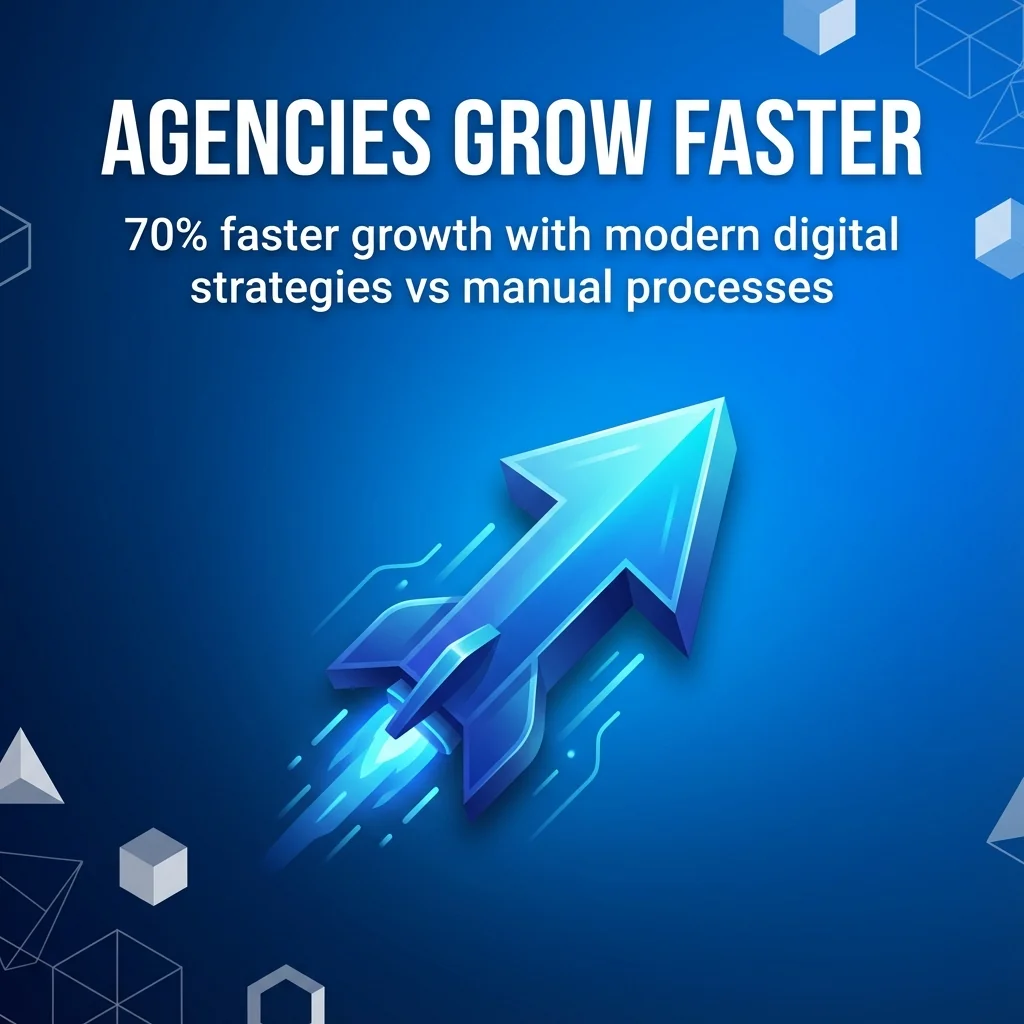
This guide examines the systems, tools, and strategies that enable social media agencies to manage multiple clients’ social calendars efficiently. You’ll discover proven frameworks for content organisation, scheduling workflows, team collaboration, and quality control.
The goal is straightforward. Build scalable systems that maintain quality whilst accommodating growth. Your agency can manage five clients or fifty without operational breakdowns.
Understanding Social Media Management for Agencies
Social media management agencies handle planning, creation, scheduling, and analysis of content across platforms like Facebook, Instagram, TikTok, and LinkedIn. Their core responsibility centres on maintaining consistent, strategic presence that drives brand awareness, engagement, and business growth for multiple clients simultaneously.
The service extends beyond simple posting. Agencies develop comprehensive strategies aligned with each client’s unique goals. They create content calendars, produce visual assets, write copy, engage with communities, and analyse performance metrics.
Client expectations have evolved significantly. Basic posting services no longer suffice. 83% of marketers use Facebook for marketing, and most clients expect presence across multiple platforms with platform-specific strategies.
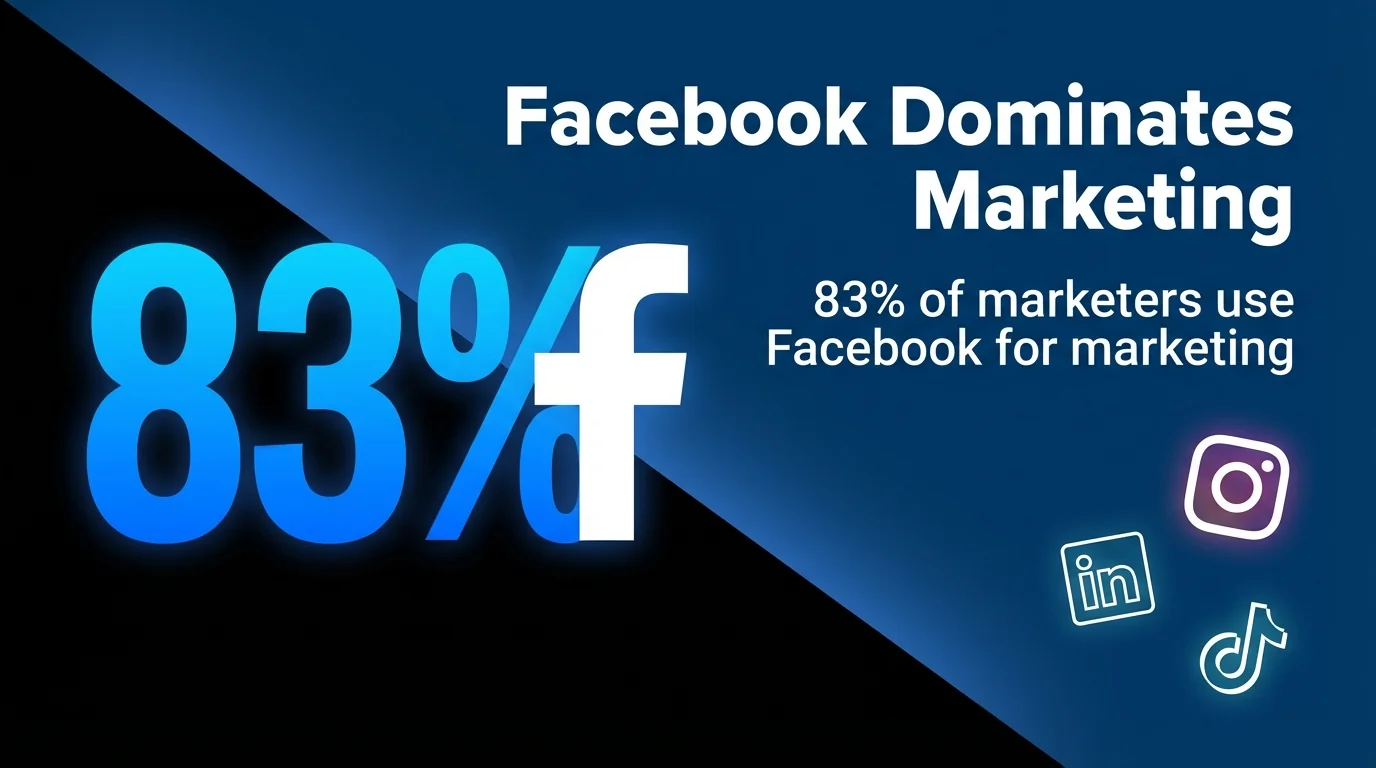
This complexity multiplies when managing numerous clients. Each brand requires distinct voice, visual identity, posting schedule, and platform focus. Maintaining these distinctions whilst operating efficiently represents the fundamental challenge.
Core Services Agencies Provide
Social media management encompasses several interconnected services. Content creation forms the foundation, including graphics, videos, and copywriting. Agencies produce original content whilst also curating relevant third-party material.
Strategic planning determines what content to create and when to publish it. This involves audience research, competitor analysis, and platform algorithm understanding. The strategy dictates the entire content calendar structure.
Community management handles audience interactions. Agencies respond to comments, messages, and mentions across platforms. This real-time engagement builds relationships and manages reputation.
Social media advertising represents a distinct service layer. Social media management services range from £380 to £3,800 per month, with advertising services often commanding premium rates due to the technical expertise required.
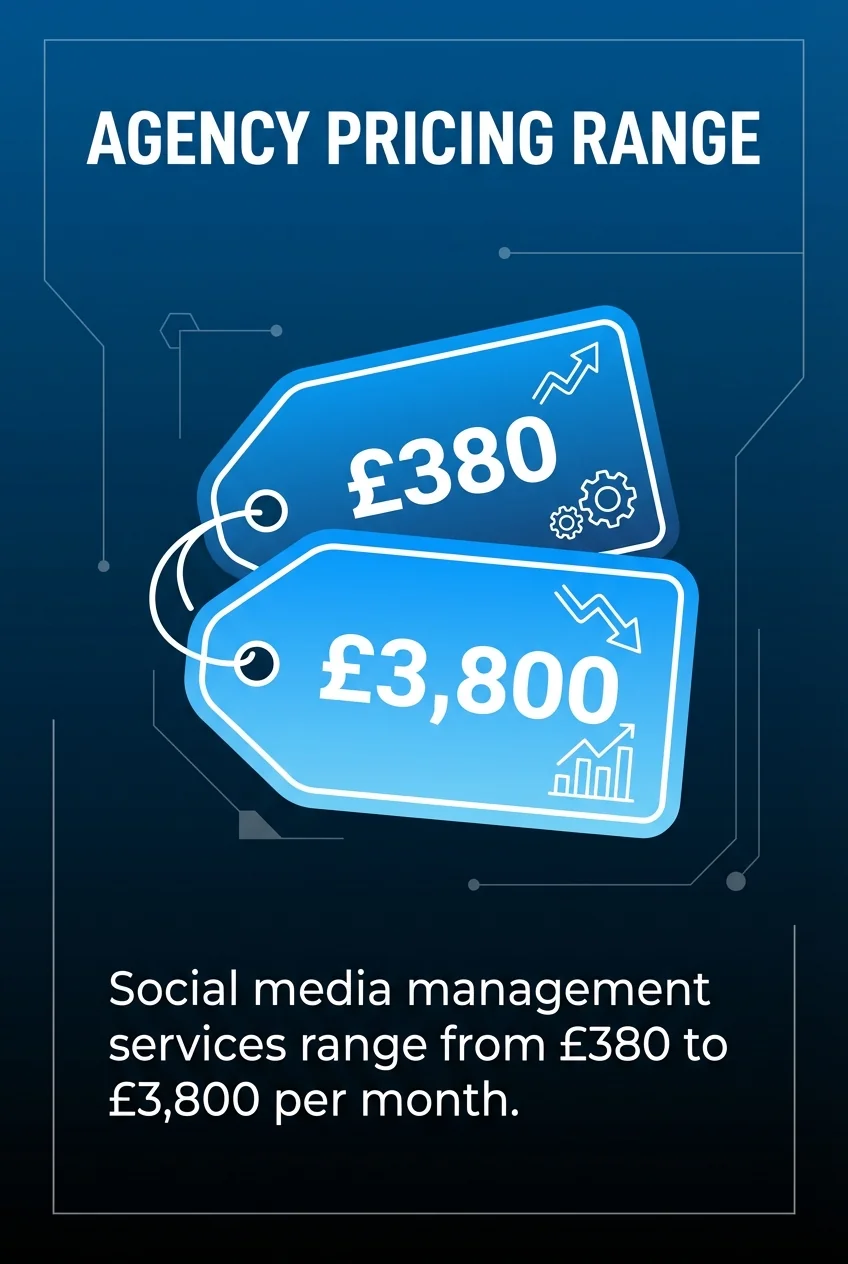
Platform Considerations
Each social media platform demands unique approaches. Instagram prioritises visual aesthetics and Stories. LinkedIn focuses on professional content and thought leadership. TikTok requires native video creation and trend participation.
Facebook remains essential for many businesses despite declining organic reach. Twitter emphasises timely commentary and conversation. Each platform operates on different algorithms, content formats, and audience expectations.
Managing multiple clients across these platforms requires platform-specific expertise. Agencies must understand optimal posting times, content formats, and engagement strategies for each network.
The complexity increases when clients maintain presence across multiple platforms. A single client might require content for Instagram, Facebook, LinkedIn, and TikTok, each with distinct requirements and schedules.
Top Social Media Management Agencies in 2025
Leading social media agencies demonstrate specific characteristics that enable effective multi-client calendar management. These agencies have systematised their operations, invested in proper tools, and developed processes that scale.
Understanding how established agencies structure their services provides valuable insights. Their approaches represent battle-tested methodologies refined through managing numerous client accounts simultaneously.
Full-Service Social Media Agencies
Full-service agencies handle comprehensive social media management from strategy through execution and analysis. These agencies typically serve established businesses requiring complete social media solutions across multiple platforms.
LYFE Marketing stands out for their data-driven approach. They manage content creation, community engagement, and paid advertising campaigns. Their systems enable simultaneous management of accounts across Facebook, Instagram, Twitter, and LinkedIn.
Thrive Internet Marketing Agency combines social media management with broader digital marketing services. They create integrated campaigns that align social content with email marketing, SEO, and paid search efforts.
Disruptive Advertising focuses heavily on paid social campaigns whilst maintaining organic presence. Their approach emphasises ROI tracking and conversion optimisation across all client accounts.
| Agency Type | Services | Ideal Client |
|---|---|---|
| Full-Service | Strategy, content, advertising, analytics | Established businesses with comprehensive needs |
| Creative-Focused | Content production, visual design, storytelling | Brands prioritising creative excellence |
| Performance-Driven | Paid advertising, conversion optimisation, ROI tracking | Businesses focused on measurable results |
Creative Social Media Agencies
Creative agencies prioritise content quality and brand storytelling. They excel at producing visually compelling content that captures attention and drives engagement across social media platforms.
These agencies typically employ in-house creative teams including graphic designers, video producers, and copywriters. Their content production workflows enable consistent quality across multiple client accounts.
Socialfly exemplifies the creative agency model. They develop brand-specific content strategies emphasising visual storytelling. Their production systems allow simultaneous content creation for numerous clients without quality compromise.
Obviously combines creative excellence with strategic planning. They focus on understanding each brand’s unique voice and translating that into cohesive social media presence across platforms.
Social Media Advertising Agencies
Advertising-focused agencies specialise in paid social campaigns across Facebook, Instagram, LinkedIn, and other platforms. They excel at audience targeting, ad creative testing, and campaign optimisation.
These agencies require sophisticated tracking systems. Managing multiple clients’ advertising budgets, audiences, and creatives demands robust organisation and clear separation between accounts.
Sculpt emphasises B2B social media advertising, particularly on LinkedIn. They manage complex campaigns targeting specific industries and job titles whilst maintaining clear account separation.
KlientBoost focuses heavily on conversion-driven advertising. Their systems track performance across multiple client accounts, enabling rapid optimisation based on real-time data.
Essential Tools for Multi-Client Calendar Management
Managing multiple clients’ social calendars becomes impossible without proper tools. The right technology stack transforms overwhelming complexity into manageable workflows.
Agencies require tools addressing specific operational needs: content planning, asset organisation, scheduling automation, approval workflows, and performance tracking. Each category plays a critical role in maintaining organisation across numerous accounts.
Social Media Management Platforms
Buffer provides streamlined scheduling across multiple clients and platforms. The interface allows agencies to manage distinct content calendars for each client whilst maintaining overview of all scheduled content.
The platform supports Facebook, Instagram, Twitter, LinkedIn, and Pinterest. Agencies can schedule posts weeks in advance, preview how content appears on each platform, and adjust timing based on optimal posting windows.
Hootsuite offers enterprise-level functionality for larger agencies. Their dashboard accommodates unlimited social profiles organised by client, with team collaboration features enabling multiple staff members to work across accounts.
Sprout Social combines scheduling with robust analytics and reporting. Agencies can create custom reports for each client, tracking engagement metrics, audience growth, and content performance over time.
Agorapulse emphasises content approval workflows. Clients can review scheduled posts before publication, reducing revision cycles and ensuring alignment with brand guidelines.
Content Planning and Collaboration Tools
Notion enables comprehensive content planning. Agencies build custom databases tracking content ideas, production status, and publication schedules across all clients in one centralised location.
Trello provides visual project management suited to content workflows. Agencies create boards for each client, with cards representing individual content pieces moving through stages from ideation to publication.
Asana facilitates task assignment and deadline tracking. Team members receive notifications about upcoming content deadlines, ensuring nothing falls through gaps when managing multiple client calendars.
These collaboration tools integrate with communication platforms like Slack, creating seamless workflows where teams discuss content, assign tasks, and track progress without switching between numerous applications.
Asset Management Systems
Google Drive provides cloud-based storage with folder structures organising assets by client. Agencies create shared drives where team members access brand guidelines, logos, and approved imagery.
Dropbox offers similar functionality with enhanced file versioning. Multiple team members can work on documents simultaneously, with changes tracked and previous versions accessible if needed.
Canva enables template-based design for non-designers. Agencies create brand-specific templates for each client, allowing rapid content creation whilst maintaining visual consistency across posts.
Proper asset organisation prevents common disasters. Clear naming conventions, client-specific folders, and access permissions ensure team members never accidentally use wrong client’s assets in scheduled content.
| Tool Category | Primary Function | Key Benefit |
|---|---|---|
| Scheduling Platforms | Automate posting across platforms | Centralised calendar management |
| Collaboration Tools | Coordinate team workflows | Clear task assignment and tracking |
| Asset Management | Organise brand materials | Prevent content mix-ups between clients |
Building Scalable Content Calendar Systems
Systematic approaches to content calendar creation enable agencies to manage multiple clients without constant firefighting. The foundation lies in establishing repeatable processes that maintain quality whilst accommodating scale.
Successful systems share common characteristics. They separate client accounts clearly, automate repetitive tasks, build in quality checkpoints, and provide visibility into upcoming content across all managed accounts.
Calendar Structure and Organisation
Each client requires distinct calendar structure reflecting their unique posting frequency, platform mix, and content themes. A B2B client might post daily on LinkedIn and three times weekly on Twitter, whilst a consumer brand maintains daily presence across Instagram, Facebook, and TikTok.
Master calendar views provide essential oversight. Agencies need visibility into all clients’ scheduled content, identifying potential conflicts, resource bottlenecks, and coverage gaps across the team’s workload.
Colour-coding systems prevent confusion. Assign each client a specific colour in scheduling tools, making it immediately obvious which content belongs to which brand when viewing consolidated calendars.
Template structures speed calendar creation. Develop frameworks for different client types (B2B, consumer, e-commerce) that new clients slot into, reducing setup time whilst ensuring comprehensive planning coverage.
Content Categorisation and Themes
Organising content by category simplifies planning and ensures balanced post mix. Common categories include educational content, promotional posts, user-generated content, industry news, and engagement-focused questions.
Thematic planning maintains consistency. Many agencies use weekly or monthly themes, grouping related content together to reinforce key messages and simplify both planning and production processes.
Platform-specific categories acknowledge different networks’ requirements. Instagram content might include Stories, Reels, and feed posts as separate categories, each requiring distinct creative approaches and scheduling patterns.
The 80-20 rule provides useful guidance. Approximately 80% of content should educate, entertain, or engage audiences, whilst only 20% directly promotes products or services. This balance maintains audience interest and algorithm favour.
Production Workflow Integration
Content calendars must connect directly to production workflows. When a post appears on the calendar, the team needs clear understanding of who creates it, when production occurs, and what approvals are required.
Lead time requirements vary by content type. Simple text posts might require two days notice. Custom graphics need four days. Video content demands one to two weeks. Build these timelines into calendar planning.
Batch production improves efficiency significantly. Rather than creating one client’s content daily, dedicate specific days to production for each client. This reduces context-switching and accelerates output.
Creating effective social media content calendars requires balancing strategic planning with operational flexibility, ensuring calendars guide work without becoming rigid constraints.
Implementing Efficient Scheduling Workflows
The transition from planning to execution determines whether content calendars succeed or fail. Efficient scheduling workflows ensure planned content actually publishes on time without constant manual intervention.
These workflows must accommodate reality’s messiness. Clients request last-minute changes. Platform algorithms shift priorities. Current events require schedule adjustments. Robust systems handle these disruptions without derailing entire calendars.
Scheduling Automation Strategies
Automation and AI adoption drive 20-30% productivity gains in social media agencies. This improvement stems primarily from automated scheduling replacing manual posting across multiple client accounts.
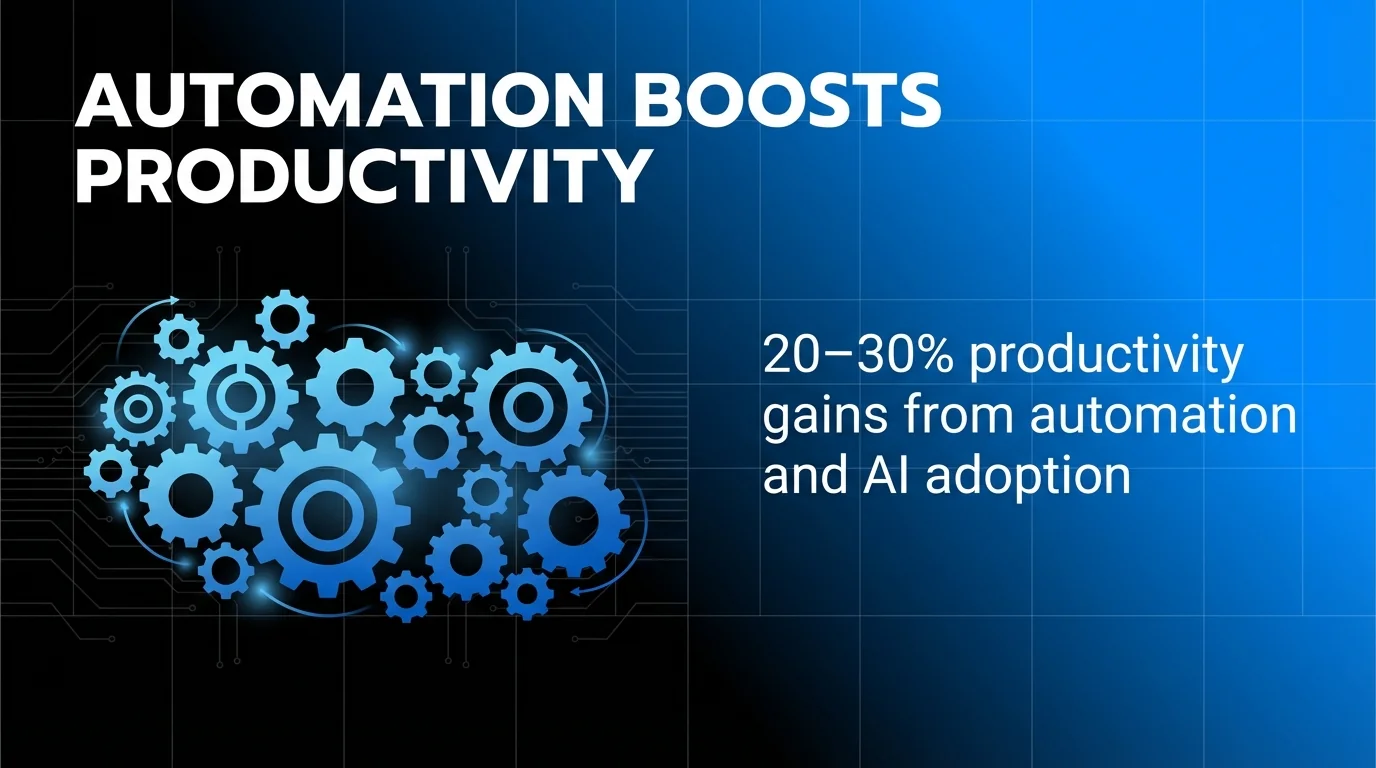
Schedule content in batches rather than individual posts. Dedicate specific time blocks to loading full weeks of content for each client, reducing the cognitive load of constant scheduling decisions.
Optimal timing varies by platform and audience. Facebook performs well during midday and early evening. LinkedIn thrives during business hours. Instagram sees strong engagement in early morning and late evening. Schedule accordingly for each client’s platforms.
Queue systems provide flexibility within structure. Rather than scheduling every post to specific times, some agencies use queues that automatically fill predetermined time slots with next available content.
Quality Control Checkpoints
Multiple review stages prevent errors before publication. First-level reviews check basic accuracy: correct client account selected, proper hashtags included, links functional, and images attached correctly.
Brand alignment reviews ensure content matches client voice, visual style, and messaging guidelines. This review catches content that’s technically correct but tonally inappropriate for the specific brand.
Final approval workflows vary by client. Some prefer reviewing every post pre-publication. Others trust agencies with content approval, requiring review only for strategic campaigns or sensitive topics.
Create checklists for each review stage. These standardised checks ensure consistent quality across all clients and team members, reducing errors that damage client relationships and agency reputation.
Emergency Protocol Systems
Current events sometimes require immediate schedule changes. When major news breaks, previously scheduled lighthearted content might appear tone-deaf. Agencies need protocols for rapid calendar reviews and adjustments.
Designate specific team members with authority to pause scheduled content when needed. This prevents paralysis during crises whilst maintaining appropriate control over client accounts.
Maintain backup content libraries for each client. When removing scheduled posts due to current events, these libraries provide appropriate replacement content quickly without requiring emergency production.
Managing multiple social media accounts effectively requires systems that maintain control whilst enabling rapid response to unexpected situations across numerous client calendars simultaneously.
Team Coordination and Collaboration Methods
Multiple team members working across numerous client accounts require exceptional coordination. Without clear systems, teams struggle with duplicated efforts, missed deadlines, and communication breakdowns.
Effective collaboration stems from clarity. Everyone needs understanding of their responsibilities, deadlines, and how their work connects to broader client goals and team workflows.
Role Definition and Assignment
Clearly defined roles prevent confusion and gaps. Common agency roles include strategists who develop content plans, creators who produce assets, schedulers who load content into platforms, and account managers who maintain client relationships.
Client-based assignment works well for smaller agencies. Each team member owns specific clients, handling all aspects of their social media management. This creates clear accountability but can create bottlenecks when team members are unavailable.
Function-based assignment suits larger operations. Specialists focus on specific tasks across all clients. Designers create graphics for multiple accounts. Copywriters develop captions. Schedulers load content. This improves efficiency but requires stronger coordination systems.
Hybrid models combine both approaches. Account managers own client relationships whilst specialists contribute specific skills across multiple accounts. This balances efficiency with relationship continuity.
Communication Protocols
Regular status meetings keep teams aligned. Weekly planning sessions review upcoming content across all clients, identifying potential issues and coordinating resource allocation.
Daily standups work well for larger teams. Brief check-ins highlight immediate priorities, surface blocking issues, and ensure everyone understands their day’s focus across various client accounts.
Asynchronous communication suits remote teams. Detailed project documentation, shared calendars, and collaborative planning tools enable coordination without requiring simultaneous availability.
Client communication protocols establish clear boundaries. Designate specific team members as client contact points, preventing clients from pulling multiple team members in different directions with competing requests.
Knowledge Sharing Systems
Document client-specific information centrally. Brand guidelines, approved messaging, product details, and performance benchmarks should be accessible to all team members working on each account.
Regular training sessions share learnings across the team. When one member discovers effective tactics for a specific industry or platform, systematic knowledge sharing spreads these insights across all relevant client accounts.
Post-mortem analyses after major campaigns extract lessons. What worked well? What would you change? These insights inform future strategy across similar clients.
Create runbooks for common processes. Step-by-step documentation for tasks like setting up new client accounts, conducting content approvals, or responding to negative comments ensures consistency regardless of which team member handles each task.
Analytics and Reporting Across Multiple Clients
Performance tracking becomes exponentially more complex when managing numerous client accounts. Agencies must monitor metrics across multiple platforms and clients, identifying trends and opportunities whilst demonstrating value through clear reporting.
Effective analytics systems balance comprehensiveness with efficiency. Track metrics that matter without drowning in data that provides no actionable insights.
Metric Tracking Systems
Core metrics include reach, engagement rate, follower growth, click-through rate, and conversions. These fundamental measurements apply across most clients and platforms, enabling standardised tracking systems.
Platform-specific metrics require attention. Instagram Stories completion rate, TikTok video watch time, LinkedIn post impressions, and Facebook group engagement each provide platform-specific insights unavailable through generalised metrics.
Benchmark performance against client-specific goals rather than universal standards. A B2B client with 5% engagement rate might be performing exceptionally, whilst that same rate indicates problems for a consumer brand.
Automated reporting tools consolidate data from multiple platforms. Rather than manually pulling metrics from Facebook, Instagram, LinkedIn, and Twitter separately for each client, automation systems generate comprehensive reports with minimal manual effort.
Client Reporting Structure
Monthly reports suit most client relationships. This frequency provides sufficient data for meaningful analysis whilst avoiding overwhelming clients with excessive reporting or consuming excessive agency resources.
Report templates maintain consistency whilst allowing customisation. Standard sections cover performance overview, top-performing content, audience insights, and recommendations. Client-specific elements address their unique goals and circumstances.
Visual data presentation improves comprehension. Charts showing follower growth trends, graphs comparing engagement across content types, and highlighted top posts communicate performance more effectively than dense numerical tables.
Context matters more than raw numbers. A 2% engagement rate means nothing without explaining whether that represents improvement, meets benchmarks, or indicates needed adjustments to strategy.
Performance Optimisation Processes
Regular performance reviews identify patterns across content types, posting times, and platforms. Which content formats drive strongest engagement? When does the audience most actively interact? What topics resonate most strongly?
A/B testing provides concrete answers to strategic questions. Test different posting times, caption styles, hashtag strategies, or content formats. Measure results systematically and implement learnings across similar clients.
Quarterly strategy reviews step back from tactical adjustments. Evaluate whether current approach achieves client goals. Consider major shifts in platform algorithms, audience behaviour, or business priorities requiring strategic pivots.
Managing social media efficiently requires continuous refinement based on performance data, adapting strategies across multiple client accounts based on what the metrics reveal about audience preferences and content effectiveness.
Pricing Models for Social Media Management Services
Agency pricing structures directly impact profitability and scalability. The pricing model chosen influences how agencies allocate resources across client accounts and determines whether growth improves or damages margins.
Most social media agencies charge between £30 and £145 per hour, with some top-rated agencies charging as much as £265 per hour. However, hourly billing often works poorly for managing multiple client calendars where efficiency improvements reduce billable hours.
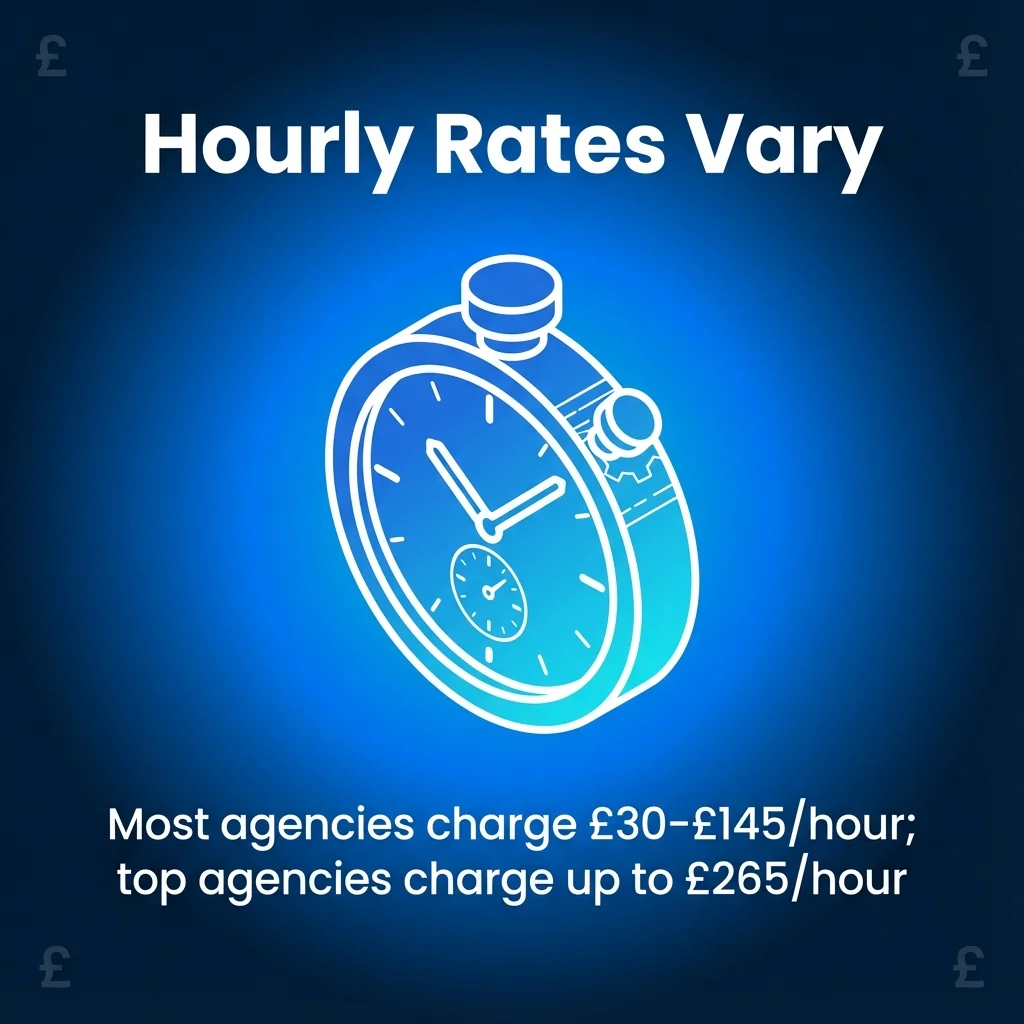
Retainer-Based Pricing
Monthly retainers provide the most common agency pricing structure. Clients pay fixed monthly fees for defined service levels: specific number of posts per platform, response time commitments, and reporting frequency.
This model creates revenue predictability essential for agency planning. Knowing monthly recurring revenue enables confident hiring decisions, tool investments, and business development efforts.
Retainer structures must reflect actual service delivery costs. Calculate time requirements for strategy development, content creation, scheduling, community management, and reporting. Add appropriate margin to ensure profitability.
Tiered retainer packages accommodate different client needs and budgets. Entry-level packages might include basic posting and monitoring. Mid-tier adds strategic planning and expanded content production. Premium tiers incorporate advertising management and advanced analytics.
Project-Based Pricing
Campaign-specific projects supplement ongoing retainer relationships. Product launches, seasonal promotions, or event coverage warrant dedicated project pricing beyond regular monthly services.
Project pricing enables premium rates for intensive work. Specialised positioning enables agencies to charge premium fees, with many niche firms commanding 2-3 times higher project value than generalist competitors.
Clear scope definitions prevent project creep. Document specific deliverables, timelines, revision rounds, and what constitutes project completion. This clarity protects profitability on fixed-fee projects.
Performance-Based Arrangements
Some agencies incorporate performance bonuses tied to specific metrics: follower growth targets, engagement rate improvements, or conversion goals. These arrangements align agency success with client results.
Base fees plus performance bonuses balance risk. Agencies receive guaranteed minimum revenue whilst participating in upside when delivering exceptional results.
Performance arrangements require careful metric selection. Choose measurements the agency genuinely influences. Follower growth and engagement reflect content quality. Revenue attribution often involves factors beyond social media’s direct control.
Choosing the Right Social Media Management Agency
Businesses seeking agency partners face numerous options. Understanding what differentiates effective agencies from mediocre ones enables better partner selection.
40% of marketers outsourced at least one-fourth of their content budgets in 2025, reflecting growing recognition that specialist agencies often deliver better results than in-house teams stretched across competing priorities.
Evaluating Agency Capabilities
Platform expertise matters significantly. Agencies claiming equal proficiency across all platforms rarely excel at any. Look for agencies demonstrating deep understanding of platforms most relevant to your business.
Industry experience provides valuable context. Agencies working within your sector understand audience expectations, competitive dynamics, and content approaches that resonate with your target customers.
Portfolio reviews reveal actual capabilities. Request case studies showing specific results achieved for similar clients. Look beyond vanity metrics toward business impact: lead generation, customer acquisition, or revenue influence.
Process transparency indicates operational maturity. Strong agencies articulate clear workflows for content creation, approval, scheduling, and reporting. This transparency suggests systems enabling effective multi-client management.
Questions to Ask Potential Agencies
How many clients do you currently manage? This reveals whether the agency has experience operating at scale comparable to your needs.
What tools do you use for scheduling and collaboration? Their technology stack indicates sophistication and ability to manage multiple accounts efficiently.
How do you handle client approvals? Understanding their workflow reveals whether their process matches your desired involvement level.
What metrics do you track and report? This question uncovers whether they focus on meaningful business outcomes or superficial vanity metrics.
Can you share references from current clients? Speaking with existing clients provides insights into day-to-day relationship quality and results delivery.
Red Flags to Avoid
Guaranteed results indicate dishonesty. No agency can guarantee specific follower counts or engagement rates. Platform algorithms, competitive actions, and market conditions all influence results beyond agency control.
Exclusively automated content suggests low quality. Whilst automation enables efficiency, completely automated posting without human creativity and strategic thinking produces mediocre results.
Reluctance to provide transparent reporting indicates potential issues. Strong agencies eagerly share performance data, confident their work delivers measurable value.
One-size-fits-all approaches rarely work. Each business requires tailored strategy reflecting unique goals, audience, and competitive positioning. Agencies pushing identical strategies across all clients lack necessary strategic sophistication.
Future Trends in Agency Social Media Management
The social media management field continues evolving rapidly. Agencies managing multiple client calendars must anticipate and adapt to emerging trends affecting workflows and service delivery.
Agencies with 90% or higher annual client retention show stronger revenue growth than those with high churn. Staying ahead of trends helps agencies maintain client relationships through continuously relevant service offerings.
Artificial Intelligence Integration
AI tools increasingly assist content creation, from generating caption variations to producing basic graphics. These tools accelerate production whilst enabling personalisation at scale across multiple client accounts.
Predictive analytics powered by AI help agencies identify optimal posting times, content topics, and engagement strategies based on historical performance patterns across similar content and audiences.
However, AI complements rather than replaces human creativity and strategy. Agencies succeeding with AI use it to handle repetitive tasks, freeing team members for strategic thinking and creative work that truly differentiates client content.
Platform Evolution
New platforms emerge regularly whilst established networks evolve their features and algorithms. Agencies must evaluate which new platforms warrant investment whilst maintaining excellence on core networks.
Short-form video continues dominating social media, from TikTok to Instagram Reels to YouTube Shorts. Agencies managing multiple clients need efficient video production workflows that maintain quality whilst scaling across numerous accounts.
Social commerce integration deepens, with platforms adding shopping features that blur lines between content and transaction. Agencies must understand these commercial features to serve e-commerce clients effectively.
Measurement Sophistication
Attribution models grow more sophisticated, better connecting social media activity to business outcomes. Agencies demonstrating clear ROI will command premium pricing and stronger client retention.
Privacy changes affect tracking capabilities. Platform restrictions and privacy regulations limit data availability, requiring agencies to develop alternative measurement approaches that still demonstrate value effectively.
Focus shifts toward meaningful engagement metrics over vanity measurements. Sophisticated clients increasingly ask about conversation quality, community sentiment, and business impact rather than simple follower counts.
Effective social media content calendar templates must evolve alongside these trends, incorporating new content formats, platform features, and measurement approaches whilst maintaining the fundamental organisation that enables multi-client management.
Quick Answers to Common Questions
What does a social media management agency do?
A social media management agency plans, creates, schedules, and analyses content across platforms to boost brand awareness, engagement, and growth. They handle strategy, community management, campaign development, and reporting to ensure consistent and effective online presence for businesses.
How much does a social media management agency cost?
Social media management agency costs vary widely, typically ranging from £380 to £3,800 per month depending on service scope, platform coverage, and content volume required. Hourly rates range from £30 to £265 per hour for specialised agencies.
Is it worth hiring a social media agency?
Hiring a social media agency is worthwhile for businesses seeking expert strategy, consistent content, and measurable growth. Agencies bring platform knowledge, creative capabilities, and analytics expertise that maximise engagement and ROI whilst saving internal resources.






